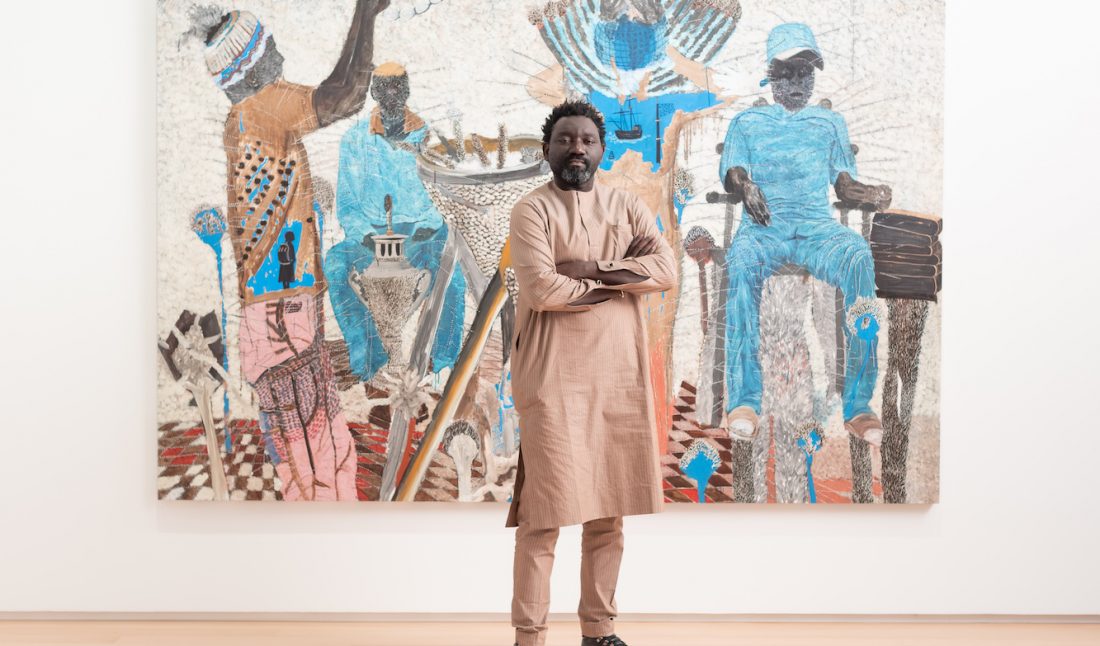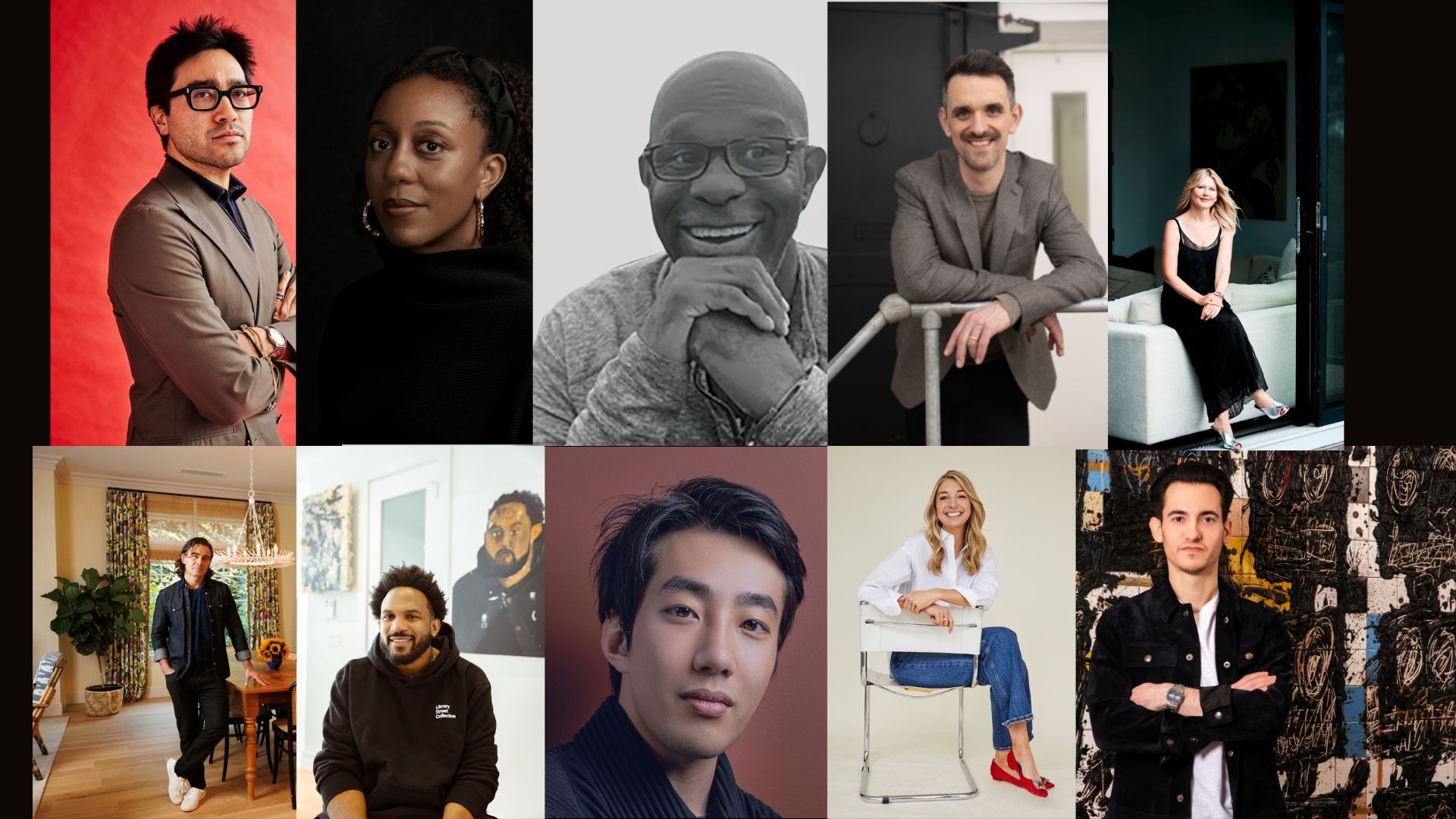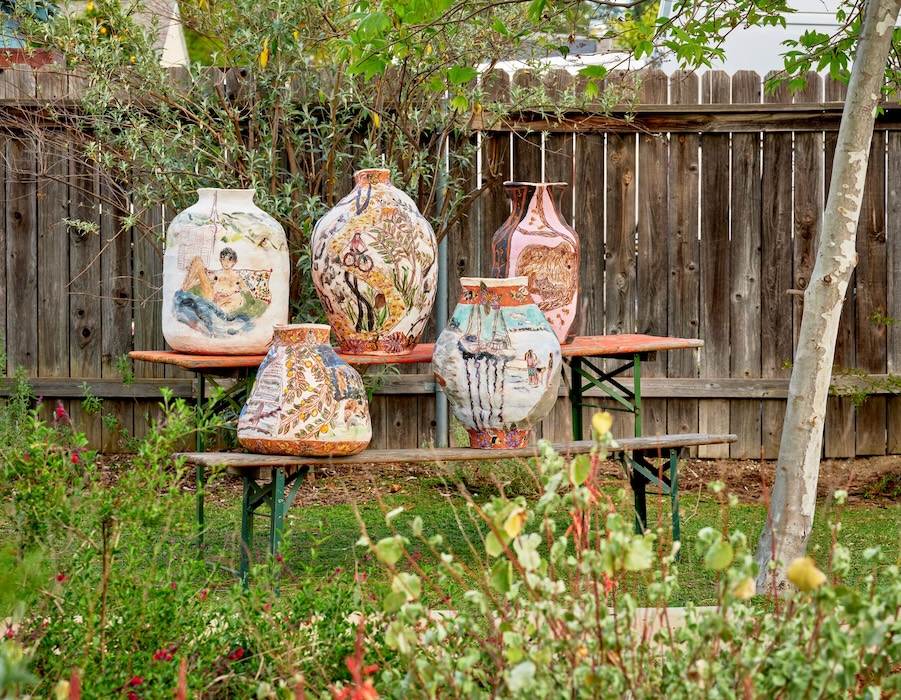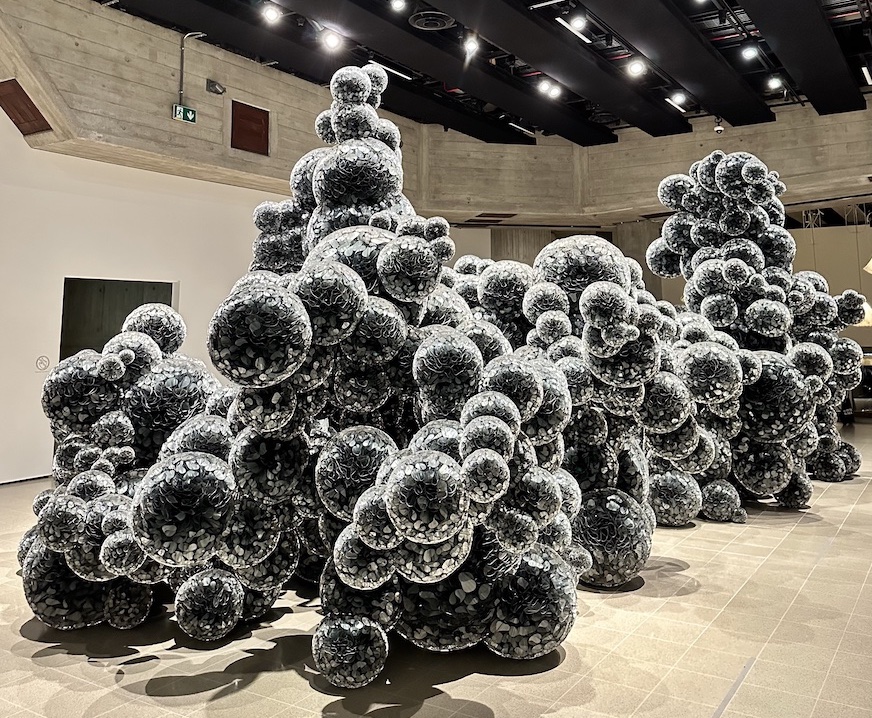On September 7, Galerie Templon unveils a new space in New York with Senegalese painter Omar Ba’s latest exhibition: “Right of Soil – Right to Dream.” The dynamic artist is quickly becoming a celebrated name with plentiful solo and group shows over the last decade—including a summer exhibition at the Royal Academy of Arts in London, the Biennale of Dakar in 2014 and 2022, as well as a solo show at the Royal Museums of Fine Arts of Belgium. With each new piece, Ba fiercely and poetically explores the experiences of Black communities and of Africa on the world stage. References range from art history to current global crises, synthesized into a magical and powerful interpretation of past, present, and future.
Ba creates to an international pulse. The artist first studied Fine Arts in Geneva and lives between Europe, Africa, and America. He spent time in New York in 2019 while embarking on a residency at the International Studio and Curatorial Program (ISCP). With this show of new work at Galerie Templon, Ba examines injustices against African democracies, domination over individual freedoms, and the ramifications on African American identity. In a melange of textures and techniques, the artist’s intimate works depict human facial expressions, ancestral rituals, and even energetic hairstyles in earth tones and vibrant shades of blue.
Whitewall had the opportunity to ask Ba about critical inspirations, momentous experiences, and painting in the name of freedom.
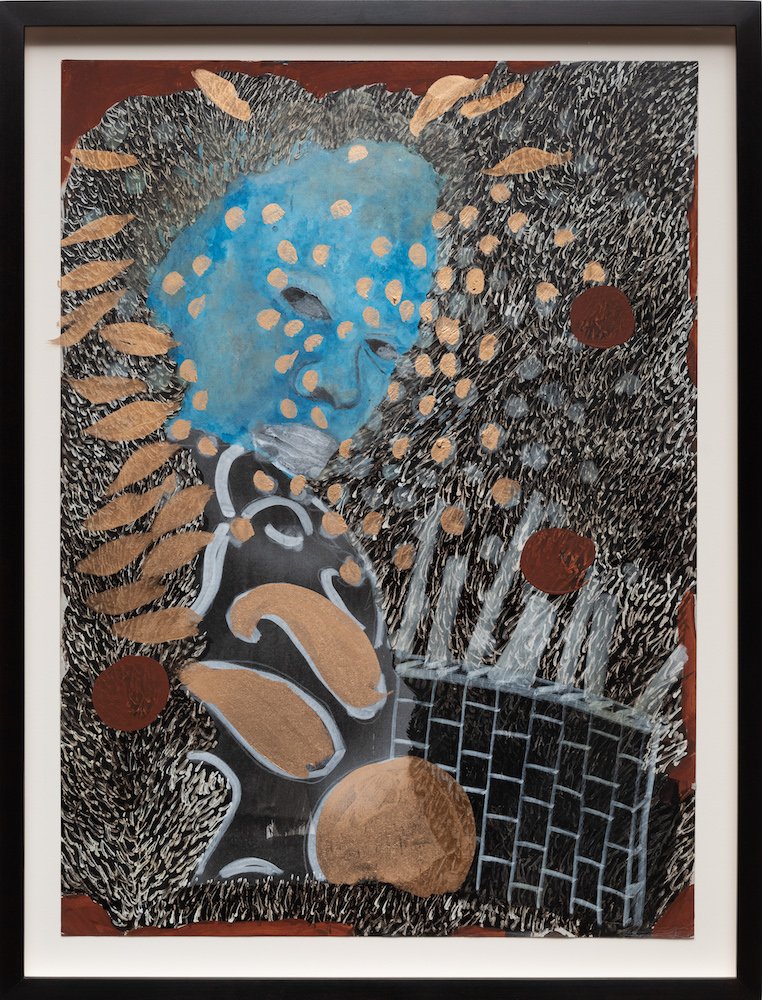 Omar Ba, “Questions pour un père (Questions For A Father) #11,” 2022, 21 ¾ x 15 ¾ in., acrylic, pencil, oil on paper; © Templon, photo by Charles Roussel, courtesy of the artist and Galerie Templon, New York.
Omar Ba, “Questions pour un père (Questions For A Father) #11,” 2022, 21 ¾ x 15 ¾ in., acrylic, pencil, oil on paper; © Templon, photo by Charles Roussel, courtesy of the artist and Galerie Templon, New York.
WHITEWALL: Your exhibition “Right of Soil – Right to Dream” will be the very first for the opening of Templon Gallery in New York. Can you speak about some of the issues you wanted to tackle in these particular paintings, including the historical and cultural dynamics of Africa and their consequences on Afro-American identity?
OMAR BA: I wanted to address the historical and cultural dynamics of Africa and the importance of building a more united federal state. I would like to depict the simultaneous influence African-American and African communities have on each other as well as the influence Africa has on the world as a whole.
WW: How was historian-philosopher Valentin-Yves Mudimbe an inspiration and a starting point for “Right of Soil – Right to Dream”?
OB: I have always been interested in the representation of black people in the world and the places they occupy. In his book The Invention of Africa, Mudimbe explains the relationship between the West and Africa, and the representation of the African in what he calls a “colonial library.”
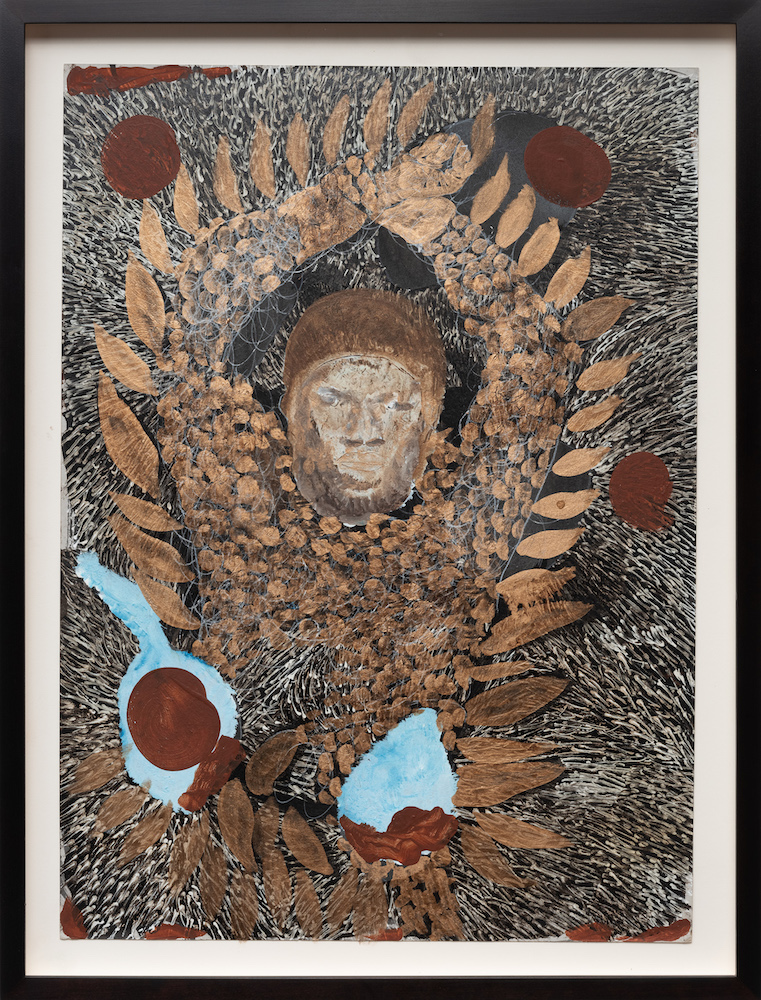 Omar Ba, “Questions pour un père (Questions For A Father) #7,” 2022, 21 ¾ x 15 ¾ in., acrylic, pencil, oil on paper; © Templon, photo by Charles Roussel, courtesy of the artist and Galerie Templon, New York.
Omar Ba, “Questions pour un père (Questions For A Father) #7,” 2022, 21 ¾ x 15 ¾ in., acrylic, pencil, oil on paper; © Templon, photo by Charles Roussel, courtesy of the artist and Galerie Templon, New York.
WW: You completed a residency at the International Studio and Curatorial Program in New York from 2019-2020. Can you tell us about this experience and its influence on your practice/latest work?
OB: My residency at the ISCP was cut short due to the pandemic but beneficial. I had time to explore and develop other formats and new techniques in my work. I visited a lot of private and public collections and met with curators like Leslie Cozzi at the Baltimore museum, where I will have my first US solo exhibition in November.
WW: How did being in the U.S. during a particularly politically and socially charged time—the pandemic and Black Lives Matter movement—influence your outlook?
OB: You are right, it’s been a particularly politically and socially charged time with the pandemic. I wanted to incorporate this movement more into my practice, highlighting the weakness of non-states and their health care systems.
WW: How would you describe your artistic process? What is a typical starting point for a work?
OB: Some will say that I am a politically engaged artist but I think I am an artist who seeks to be a witness of his time and to fight injustice. I start a work from an object, a suffering, a photo, information, or a story.
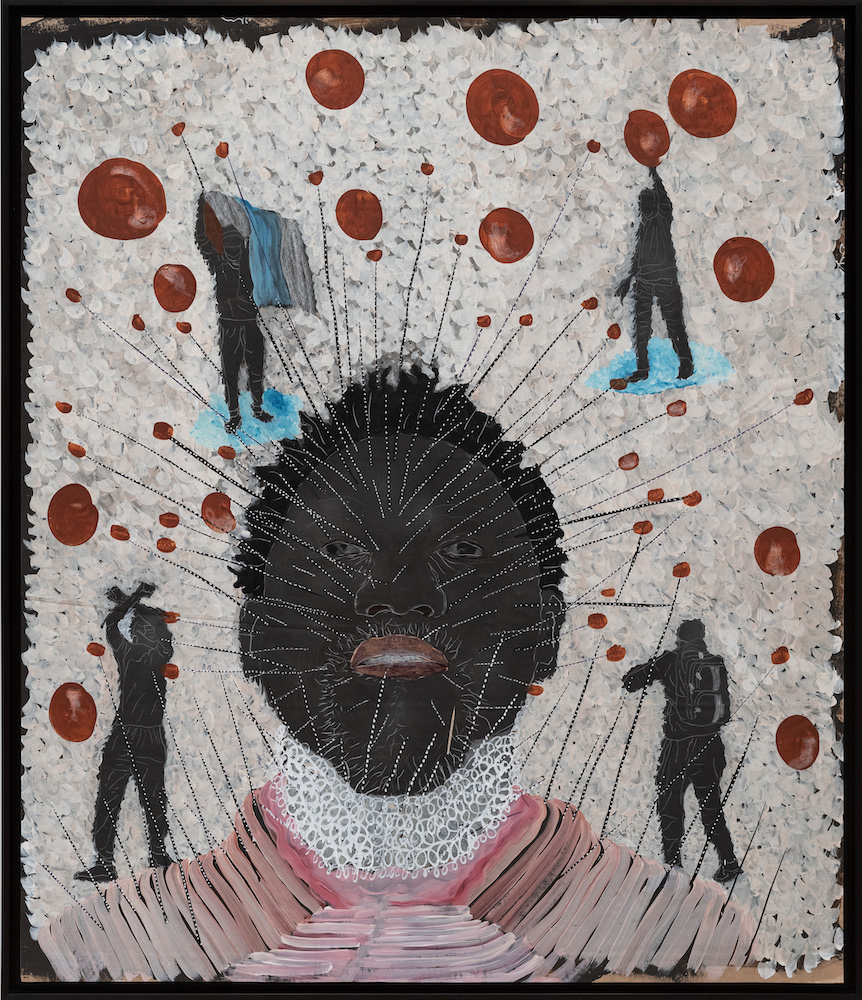 Omar Ba, “Untitled #4,” 2022, 47 ¼ x 47 ¼ in., acrylic, pencil, oil on cardboard; © Templon, photo by Charles Roussel, courtesy of the artist and Galerie Templon, New York.
Omar Ba, “Untitled #4,” 2022, 47 ¼ x 47 ¼ in., acrylic, pencil, oil on cardboard; © Templon, photo by Charles Roussel, courtesy of the artist and Galerie Templon, New York.
WW: Can you speak about the origin of your technique and unique style of mixed media paintings—fusing surreal scenes of violence and fantasy, warlords of the present, traditional folklore, colonial oppression, and the pharaohs of ancient Egypt?
OB: Painting is a remedy for me and drawing relieves me. I like to mix techniques and divert tools that are not intended for painting to create my own style.
The subjects in my work reflect my concerns including the general history of Africa, the black pharaohs of Egypt and Sudan, and the domination of people.
WW: You have lived and worked in multiple cities—Dakar, Geneva, Brussels, Paris and New York. Where is home for you at the moment and what does a typical day in the studio look like for you?
OB: I feel at home every time I enter one of my studios, whether it be in Geneva, Brussels, Paris, New York or Dakar. However, my studio in Dakar is particularly special because my family lives nearby.
I start a body of work with extensive research. I consider myself a nomad artist, finalizing my works in the city where my exhibition is being held. I buy materials locally and lay the large scrolls on the floor of the gallery, turning it into a temporary studio space.
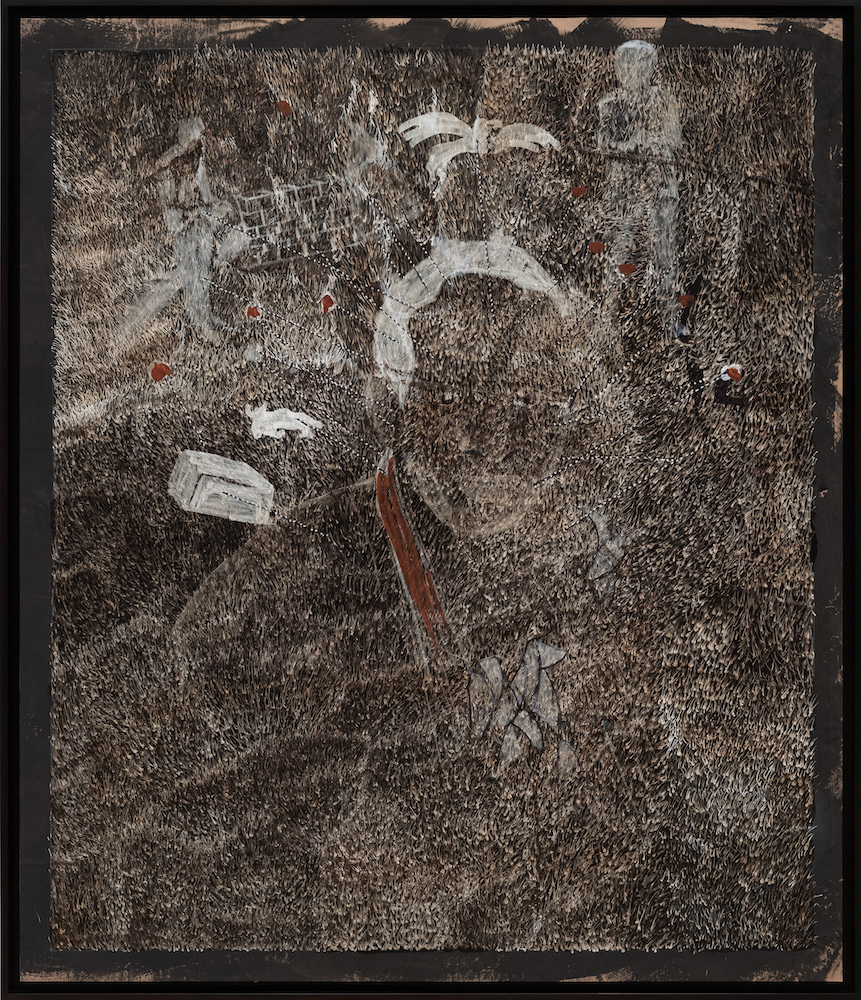 Omar Ba, “Untitled #5,” 2022, 47 ¼ x 47 ¼ in., acrylic, pencil, oil on cardboard; © Templon, photo by Charles Roussel, courtesy of the artist and Galerie Templon, New York.
Omar Ba, “Untitled #5,” 2022, 47 ¼ x 47 ¼ in., acrylic, pencil, oil on cardboard; © Templon, photo by Charles Roussel, courtesy of the artist and Galerie Templon, New York.
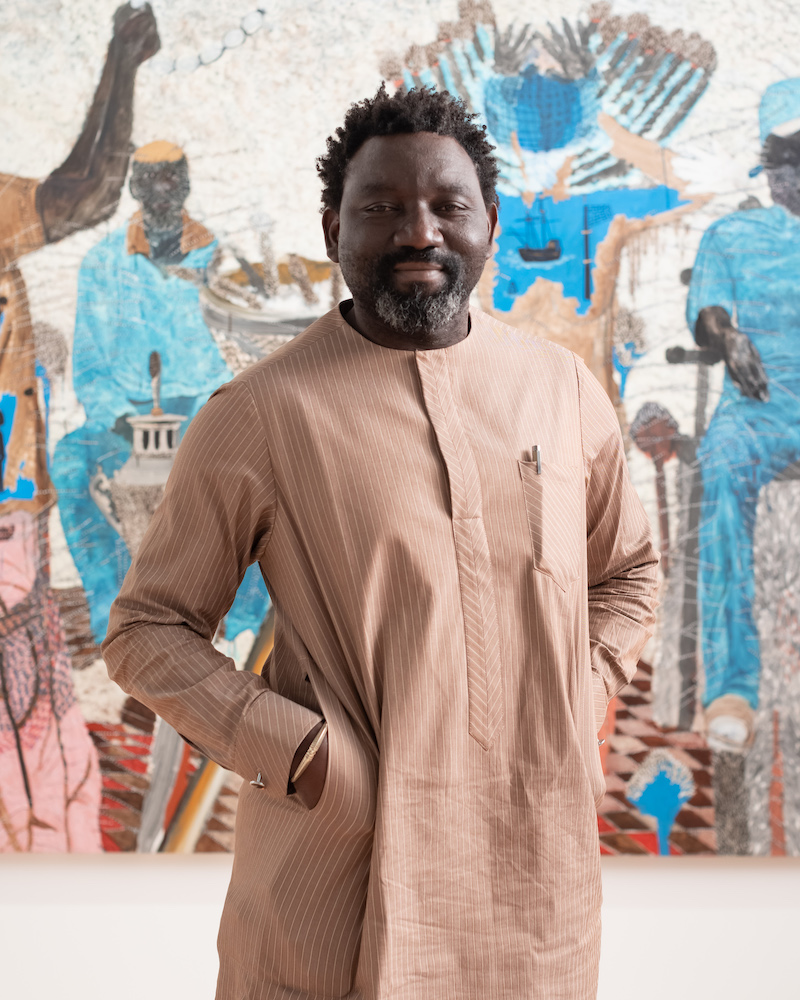 Photo by Charles Roussel, courtesy of Omar Ba and Galerie Templon, New York.
Photo by Charles Roussel, courtesy of Omar Ba and Galerie Templon, New York.






